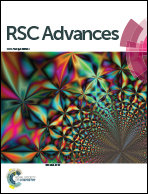Direct growth of mesoporous anatase TiO2 on nickel foam by soft template method as binder-free anode for lithium-ion batteries†
Abstract
Direct growth of mesoporous TiO2 on Ni foam via a one-step soft template synthesis was directly used for a binder-free anode for lithium-ion batteries. The mesoporous TiO2 with a high specific surface area of 158.8 m2 g−1 and average pore size of 5.4 nm formed network-like sheets on the surface of the Ni foam. The binder-free TiO2/Ni anode shows improved electrochemical performance with a capacity as high as 341 mA h g−1 at a current density of 100 mA g−1 after 10 cycles and 82.4 mA h g−1 at a current density of 1000 mA g−1 after 30 cycles. The enhanced electrochemical performance is attributed to the mesoporous structure that shortens the lithium ion diffusion path and facilitates the transport of lithium ions.



 Please wait while we load your content...
Please wait while we load your content...